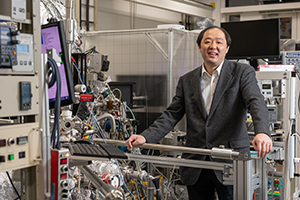

05/29/2023

One strategy towards quantum computing focuses on the isolation of topological superconductors (TSCs) that can host Majorana fermions. Such an experimental realization would enable the use of the Majorana fermions’ exotic properties for creating topologically protected qubits that are resistant to small errors and perturbations.
However, current approaches for fabricating TSC samples mostly rely on the superconducting proximity effect (SPE), which must expose the induced properties of the adjacent material by complex depositions of thin layers. These constraints produce structural inhomogeneities that hinder the observation of Majorana fermions by local spectroscopies.
In a 2020 article, Sato and coworkers from AIMR directly addressed this sample fabrication problem by inducing topological properties in a regular superconductor using the topological proximity effect—instead of inducing superconductivity in a non-superconducting material using SPE1.
With this new approach, the AIMR team fabricated a Pb(111)/TlBiSe2 sample by straightforward deposition of Pb on TlBiSe2, and detected the substrate-hosted superconductivity on the Pb surface using angle-resolved photoemission spectroscopy (ARPES).
“Our experiment has demonstrated that heterojunctions between topological insulators and regular superconductors can be useful for making new TSCs,” says Sato. “In the future, we will combine this approach with the higher energy and spatial resolutions of the next-generation synchrotron ‘NanoTerasu’ (currently under construction at Tohoku University) to aim for the first ARPES observation of TSC-hosted Majorana fermions.”
(Author: Patrick Han)
This research highlight has been approved by the authors of the original article and all information and data contained within has been provided by said authors.